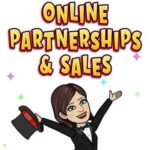
How to Make Sales from Partnerships Using Online Marketing Strategies
Partnerships are a powerful strategy for improving online marketing and sales. By collaborating with other businesses or individuals, you can expand your reach, tap into
Getting people to register and show up to a webinar or event requires effective marketing and communication strategies. Here are some steps you can take to maximize online registrations and attendance:
Remember to continuously analyze and adjust your marketing strategies based on the response you receive. Pay attention to website traffic, registration conversions, and engagement levels to optimize your approach and maximize event attendance.
The average online registration rate and show-up rate can vary significantly depending on various factors such as the nature of the event, target audience, marketing strategies, industry, and other variables. Whether it is free or paid can also make a difference.
It’s important to note that the effectiveness of your marketing efforts, the appeal of the event, the level of interest generated, and the quality of communication can all influence registrations and show up rates.
A significant portion of event registrations, typically around 30% to 50%, may occur within the last week leading up to the event. This includes both registrations made online and those made through other channels such as phone (yes, pick up the phone)
Keep marketing until the event as the highest surge in registrations often happens within the last 48 to 72 hours before the event. This is when the sense of urgency is strongest, and people who have been considering attending finally commit.
To come up with great topic headlines as a business owner, you can follow these steps:
Remember, practice and refinement are key to delivering an event that gets sign ups Rehearse, seek feedback, review performance, and continuously improve based on audience responses and conversions.
If you would like to work with a online marketing strategist to create the 5 Step process with you and handhold you through the purpose of delivering your webinar or event,

Partnerships are a powerful strategy for improving online marketing and sales. By collaborating with other businesses or individuals, you can expand your reach, tap into

What are Reels? Reels are short, entertaining videos that can be created and shared on Facebook and Instagram. They are a way to share engaging
Marketing your business online, every move counts and consistency reigns supreme. In today’s cutthroat market, trust sets you apart. Consistency breeds familiarity, and familiarity breeds


